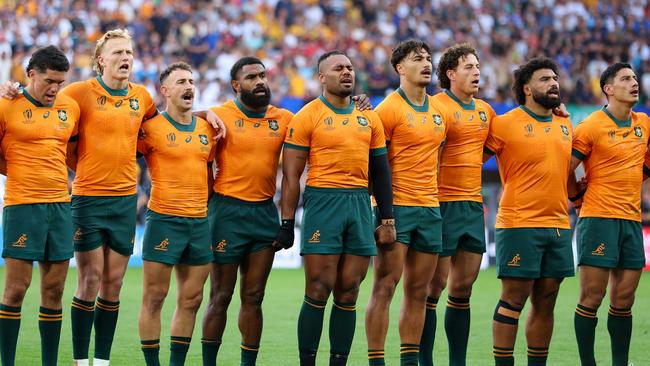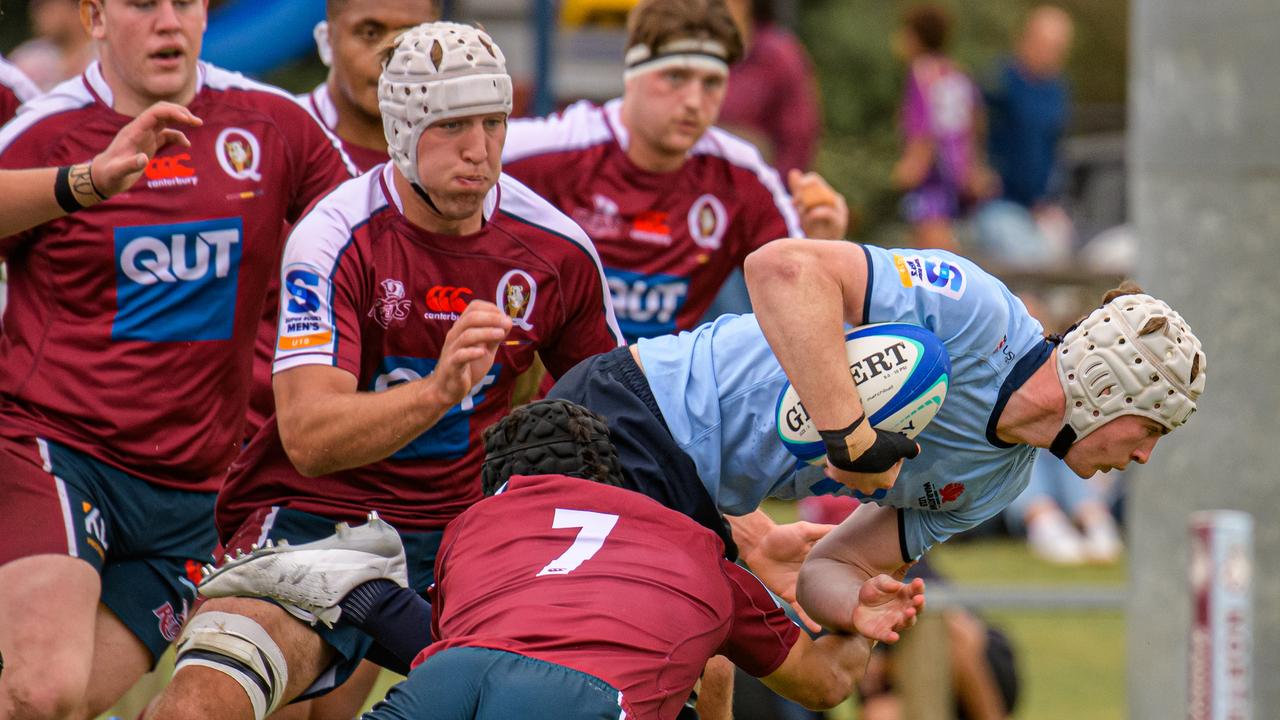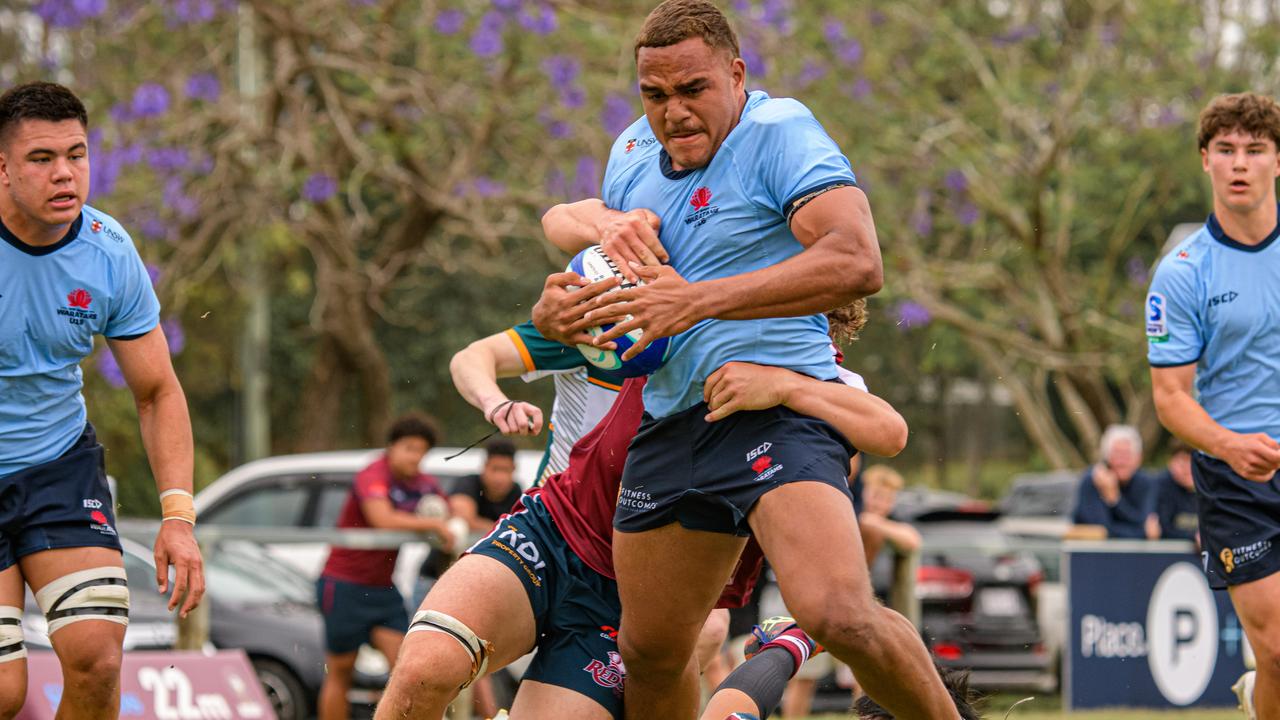Rugby union’s international landscape undergoes major overhaul
The Wallabies will take on the world in a new biennial international competition while the 2027 World Cup in Australia will look very different from this year’s tournament - see all the changes.

Rugby
Don't miss out on the headlines from Rugby. Followed categories will be added to My News.
Beaten hands down on the pitch, Australian Rugby has had a big win off the field with the sport’s global officials agreeing to a major overhaul of the 2027 Men’s World Cup as part of a series of landmark changes to the international calendar.
Years in the making, the negotiations have finally come to fruition with the World Rugby Council agreeing to usher in a number of landmark proposals that are expected to change the game for the better and deliver record profits into the code.
These include the creation of a new global tournament, to be played every two years, and a drastic overhaul of the 2027 Men’s Rugby World Cup, which is being held in Australia.
Originally scheduled to run over seven weeks from early September to late October, the 2027 World Cup will now be shortened to six weeks, from October 1 - November 13, avoiding an overlap with the AFL and NRL finals.
As exclusively revealed by this masthead last month, the number of teams will be expanded 20 to 24, boosting profits by increasing the number of games and new broadcast markets, including North America after the United States and Canada both failed to qualify for the 2023 World Cup.
Instead of the current format of four pools each consisting of five teams, followed by a three-round finals stage, the 2027 edition will be contested by six pools of four teams, then a four-round knockout phase.
Under the new streamlined system, the two top teams from each pool plus the four best third-placed teams will advance to a newly added round-of-16 before the quarter-finals.
The new format should ensure there is no repeat of the embarrassing outcome in France where the Wallabies missed the knockout phase for the first time.
Organisers have also agreed to delay the draw for 2027, avoiding a repeat of the farcical situation this time where the top four teams ended up in the same half, with France and Ireland both eliminated in the quarter-finals after losing to the eventual finalists New Zealand and South Africa.

Australian businessman Rod Eddington, who is the chairman of Rugby World Cup 2027 and 2029, thanks World Rugby for their support.
“This is a fantastic outcome for the Local Organising Committee as we prepare to transfer from future host to next host of the men’s Rugby World Cup,” he said.
World Rugby chairman Bill Beaumont said it was an easy decision to agree to expand the game’s showpiece tournament.
“The decision to expand Rugby World Cup 2027 to 24 teams is logical and the right thing to do,” he said.
“Underpinned by a new global calendar that increases certainty and opportunity, we are focused on raising standards, closing the gaps and creating a spectacle that fans demand to see. With its love of sport and major events, Australia is the perfect place to do just that.”
Yet to be given a formal name, the new competition will be played over two windows - in July and November - between Europe‘s Six Nations and the six teams from the southern hemisphere - Australia, New Zealand, South Africa, Argentina and two others to be confirmed, but most likely Fiji and Japan.
World Rugby will also run a 12-team second division for teams that miss out while creating a rebranded Pacific Nations Cup involving Canada, Fiji, Japan, Samoa, Tonga and USA.
While these tournaments have been talked about for years, the key to finally getting formal approval for a new global calendar came after all stakeholders agreed to reform the regulations so there are clearly defined windows between club and international competitions to protect player welfare and greater competitiveness.
“Restructuring the international playing calendar and the establishment of new men’s and women’s tournaments, while at the same time understanding and ensuring player welfare is front and centre, is a remarkable achievement for the sport,” Rugby Australia chair Hamish McLennan said.
“The Six Nations Championship and The Rugby Championship, international rugby’s annual flagship tournaments are rightly protected in the restructure. However, the establishment of a new tournament – to be run by SANZAAR and Six Nations Rugby - in the years without a Rugby World Cup or British & Irish Lions tour, will now provide real meaning to the crossover international matches played in the Southern Hemisphere in July and Northern Hemisphere in November.”
Originally published as Rugby union’s international landscape undergoes major overhaul



